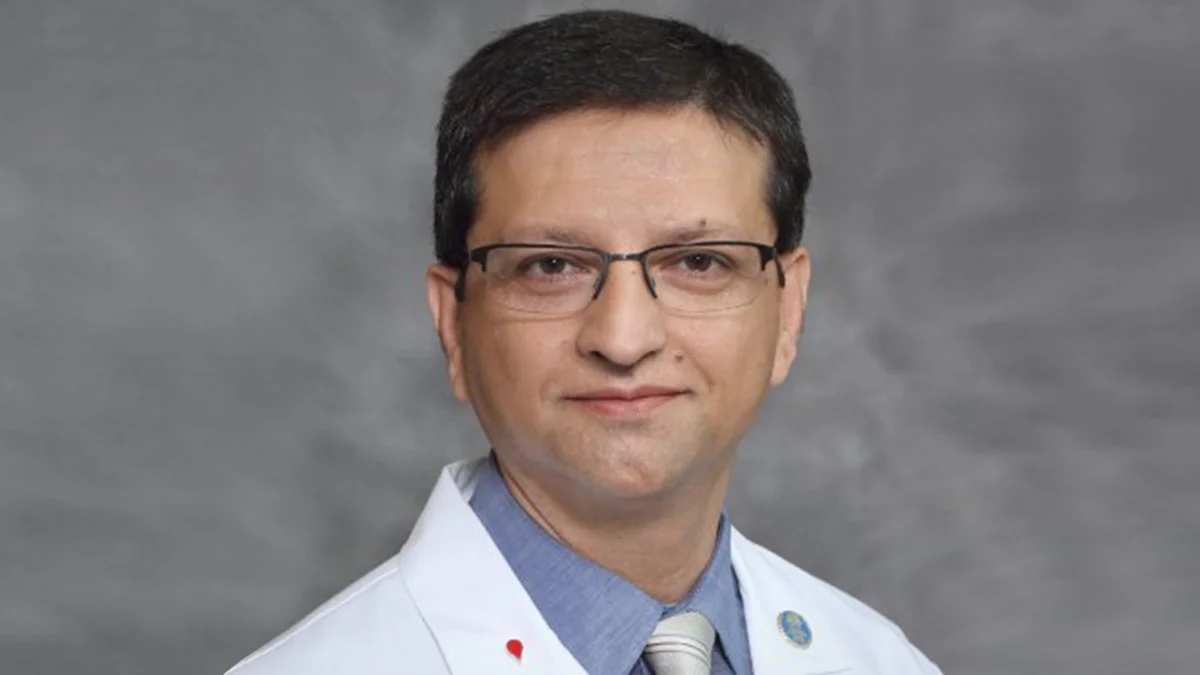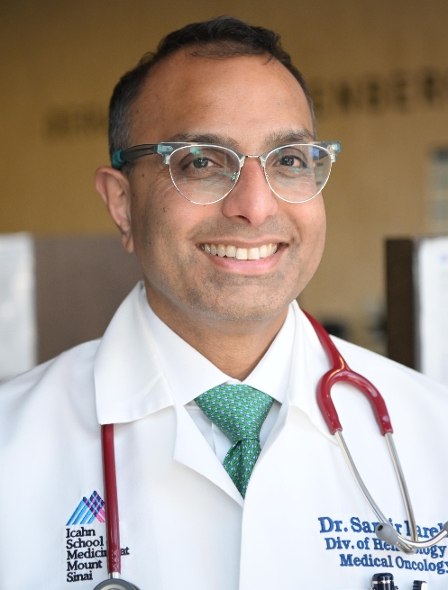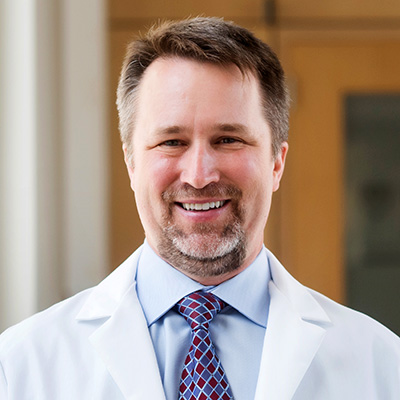
Concern and confusion are common words to summarize how the healthcare research and scientific community is feeling since Donald J. Trump began his second term as President of the United States. In the few months since, President Trump has issued several executive orders or policy changes directed at the NIH that have attempted to reduce indirect cost reimbursements, freeze research funds, and terminate grants.
“There is a lot of confusion and anxiety, and people are just trying to understand what the actual effects will be,” said Gwen Nichols, MD, chief medical officer of The Leukemia & Lymphoma Society (LLS).
Blood Cancers Today spoke with several experts in the hematology/oncology research community about these policy changes and their potential impact now and in the future.
NIH Impact
Research funding from the NIH has had a foundational role in many of the biggest advances seen in hematology oncology research over the last 30 to 40 years, according to Pavan Reddy, MD, director of the Dan L Duncan Comprehensive Cancer Center at Baylor College of Medicine.
“I would say that everything we do in modern medicine as it relates to hematology/oncology has its roots in research that was funded by or supported, either minimally or extensively, by the NIH,” Dr. Reddy said. “It is fundamental to everything we do.”
NIH funds have supported early research that led to critical breakthroughs in early targeted therapies such as imatinib, development of monoclonal antibodies such as rituximab, the development of immune checkpoint inhibitors, chimeric antigen receptor (CAR) T-cell therapy, CRISPR gene editing, and more.
More broadly, a study examining how NIH investment in pharmaceutical innovation compared with investment from the pharmaceutical industry showed that funding from the NIH contributed to 99.4% of new drugs approved from 2010 to 2019.1
During a recent forum on Capitol Hill hosted by Senators Tammy Baldwin and Peter Welch, former NIH Director Monica Bertagnolli, MD, summarized the way in which the NIH affects not only patient care, but the economy.
“Today, we are just beginning to see progress against devastating disease, which has long been hopeless—Alzheimer’s disease, ALS [amyotrophic lateral sclerosis], diabetes, even pancreatic cancer—all because of NIH funding,” Dr. Bertagnolli said. “This has proven to be a great investment for American taxpayers, producing both extraordinary improvements in health and significant profits for our nation’s economy. How can we afford to see this progress stall? Overall, the loss to our nation on so many levels will be way too great.”2
Indirect Caps
One of the first unanticipated changes occurred in early February, when the NIH announced that there would be “a standard indirect rate of 15% across all NIH grants for indirect costs in lieu of a separately negotiated rate for indirect costs in every grant.”3
“Indirect costs are instrumental to the overall research enterprise and the infrastructure that supports that research,” explained Jon Retzlaff, MBA, MPA, chief policy officer and vice president, Science Policy and Government Affairs at the American Association for Cancer Research (AACR). “Every institution and organization has a negotiated rate, whether that be 40% or 50%, when you make such a dramatic cut down to 15% for everyone that is going to be very difficult for institutions or universities to maintain that necessary support.”
The direct costs of a research project are things “that can be identified specifically with a particular sponsored project” and might include salaries for a principal investigator, equipment, and supplies directly supporting the grant-supported project.4 Indirect costs include costs that are frequently referred to as overhead expenses (for example, rent and utilities) and general and administrative expenses (for example, officers’ salaries, accounting department costs, and personnel department costs).5
Shortly after these caps to indirect costs were announced, a federal judge in Massachusetts ordered a nationwide pause temporarily blocking the NIH from reducing grants; this injunction was then extended until a ruling is made by a higher federal court.6
“There is a sense that indirect costs equal overhead, and while in theory it does, these things are not perks,” Dr. Nichols said. She mentioned an example used by a lawyer in the federal case discussing medical waste, the disposal of which would be considered an indirect cost. “The indirects go to paying for people to clean glassware, maintain freezers, and dump medical waste in a safe way. These are all the underpinnings that don’t get direct coverage in the grant.”
Dr. Reddy mentioned other examples such as costs related to research animal management, accounting, salaries, building maintenance, and electricity.
“Institutions do not have pots of money to support this kind of work for research,” he said. “If you cut indirects, the institution can’t support that research, and then even the research supported by the directs can’t be done.”
Dr. Nichols said that few would deny that there is probably some waste in the system of indirects, but that it needs to be looked at carefully. Rapid, across the board cuts—with no understanding of where the waste actually is—is not the right approach, she said.
Grant Freezes, Terminations
The status of caps on indirect costs is not the only thing in limbo. Not long after taking office, President Trump ordered a freeze on all federal grants, including NIH grants. NIH grant applications must go through an extensive and rigorous review process, and this freeze was estimated to have stalled about 16,000 grant applications vying for $1.5 billion in NIH funding, according to NPR [National Public Radio].7
Several Democratic attorneys general filed suit against the Administration arguing that the funds were not under the authority of the President. Federal Judge John J. McConnell, Jr., granted a preliminary injunction against the executive order; however, the injunction only applies to the 22 states and the District of Columbia that filed the suit.8,9 The decision was expected to be appealed. As of this writing, it appeared that some of these meetings would resume in late March; the NIH has submitted notices for 4 meetings to the Federal Register.10
“The suspension of these meetings has meant that researchers are waiting longer for review of their applications. How is research funded during that time?” Retzlaff said. “We are talking about the potential dismantling of the entire medical research enterprise. People are frightened.”
The Trump Administration also issued an executive order on January 20, 2025, aimed at “ending radical and wasteful government DEI [diversity, equity, and inclusion] programs.”11 Subsequently, the FDA appeared to have removed the website for its Project Equity, a program launched to ensure that cancer drugs were studied based on a diverse group of participants.12 Later, the NIH terminated millions of dollars in research awards based on restrictions for research related to diversity, equity, and inclusion.13
“We have had both early and senior career researchers impacted by that decision,” said Theodore Wun, MD, chief, Division of Hematology and Oncology at UC Davis Comprehensive Cancer Center. “It is hard to understand because there really is no accepted definition for what might fall into ‘DEI,’ and believe me, I have looked.”
Within hematology and oncology, research looking at different populations of patients is very important because it relates to incidence of disease, genetic makeup of the people diagnosed, and response to therapy, among other things.
“The work that has used wide populations of people has given us new insights into different prognostic factors, new targets, and the basic biology of the diseases that we deal with, as well as potential new therapies,” Dr. Wun said. “If you are only looking through a small window at things, you are not going to see the whole picture.”
For example, the incidence of Philadelphia chromosome–like acute lymphoblastic leukemia (ALL) is higher in some populations.
“By studying this disease in people at higher risk of having it, we learned about Philadelphia chromosome–like ALL—which does occur in other populations as well—and we learned how best to treat it,” Dr. Wun said. “This is not about politics. We need to study broad populations. It is good science and leads to greater insights.”
Dr. Reddy agreed. There are aspects of DEI that the scientific community views as research into disparities in care.
“Why do disparities happen, whether it be rural versus urban, by socioeconomic class, across demographics?” Dr. Reddy asked. “I feel that as scientists and doctors we need to minimize those things. To do that, we need to understand them.”
In late March, the NIH publicized that applications for funding opportunities would no longer require diversity plans and that diversity plans included in applications will not be evaluated or considered in funding decisions. Recruitment plans to enhance diversity are no longer required.14
Effects
This onslaught of change and the pending litigation related to it have left many unsure about what to do next. It has put a chill on scientific creativity, Dr. Nichols said.
“People are afraid. What are you allowed to say or not allowed to say?” Dr. Nichols said. “Information that you might be looking up one day may suddenly disappear and you can’t speak to anyone at the NIH for weeks to ask about it.”
Some of the immediate effects of these executive orders and policy changes are already evident.
“Institutions are struggling to deal with this freeze in funding, and it has only been a few weeks,” Dr. Reddy said. “People are trying to patch things up here and there, working a few extra hours if someone has been laid off, but that is not a sustainable solution.”
Dr. Wun said it is important to dispel the notion that this research funding is going only to research carried out in labs and done in Petri dishes and mice.
“The effects span research from very basic to clinical trials to population research,” Dr. Wun said. “This is research where we get new insights into the pathways of cancer development that is used to eventually develop new therapies. All of it is threatened.”
Dr. Reddy provided an example related to a clinical trial at Baylor’s Dan L Duncan Comprehensive Cancer Center, which includes a Veterans Affairs hospital. Let’s say this trial in veterans was supposed to include 5 patients that need access to a drug and need to be monitored while on the drug, Dr. Reddy said. With these types of proposed cuts, only 2 of the 5 patients can be included because the institution can no longer afford to enroll 5.
“We are not talking about missing a dose of a hypertension pill, which itself has ramifications,” Dr. Reddy said. “But missing a dose of critical therapy in the world of cancer and hematologic malignancies is literally life and death.”
Dr. Reddy said that the longer this uncertainty goes on, the more likely it is that a lot of the phase 1 units may have been shut down. In addition to the effect on patients, Dr. Wun and others mentioned the potentially devastating impact on the research community.
“People won’t have jobs,” Dr. Wun said. “Many people may choose to leave careers in research.”
Dr. Nichols said she worries about the early-to-mid–career investigators who may struggle to keep their labs open. “They are often the people with some of the most novel ideas, and they are the future of the research enterprise,” she said. “It is going to be even more competitive with less funding available, so there will be people that are going to quit, go to industry, or go work in another country.”
The LLS is looking into how it could potentially help support young researchers, and Dr. Nichols hopes that other societies or institutions will try to step up to try to “plug the holes” in funding as best as they can.
For example, in March, the American Society of Hematology (ASH) announced that it would expand eligibility of its Bridge Grants, awards that provide a 1-year installment of $150,000 to ASH members who have applied for an NIH R01 grant but were not funded.15
“Recognizing the recent disruptions to NIH study sections, ASH has waived the requirement that an NIH proposal be discussed and critiqued prior to submission to the ASH program. Additionally, the limit on other research funding/resources has increased to $500,000, the institutional match requirement is suspended, and individuals who have previously received a Bridge Grant can now apply for funding for a new proposal,” ASH announced in a statement.15
Dr. Wun echoed Dr. Nichols’ concern about the loss of research talent. “We are especially worried about early career people. They are very vulnerable, and we stand to lose an entire generation of researchers,” he said.
Dr. Nichols emphasized that although this loss may not be immediately tangible, “We will feel it 10 years from now when the U.S. is no longer the leader of scientific enterprise.”
Take Action
Dr. Nichols said that when discussing the current situation at the NIH, she tries not to focus on the policy of things, or whether or not these cuts should or should not be made.
“I focus on what the impact will be and what we can do to step up to avoid damaging results,” Dr. Nichols said. “A lot of people are politicizing it instead of saying, ‘This is the reality. Let’s talk about what it means and how to mitigate the effects.’”
On its website, the LLS encourages anyone who is concerned to contact their members of Congress to call on them to urge the Administration to rescind these devastating cuts. The LLS will send anyone who is interested simple ways to communicate with their elected officials; just text SPEAK to 73727.
“It is easy to get angry and complain, but it is not hard to advocate and educate,” Dr. Nichols said. “Go out there and talk about it and help people understand what these cuts mean and try to find solutions.”
The AACR also put out a statement of concern related to actions affecting the NIH and called upon the Administration to “abandon its numerous executive orders and other proposals that would irreparably damage NIH.”16
“We need our members, and every advocate in the medical research community, to be contacting members of Congress, and telling them to prioritize NIH funding to ensure the health of every citizen in our country,” Retzlaff said. “This is how we make sure the U.S. is at the top in terms of remaining a leading nation for medical research and ensuring we have the next generation of individuals to fight current and future disease.”
The AACR has resources available for those interested in legislative action, including a form that can be used to contact U.S. Senators and Representatives at https://www.aacr.org/professionals/policy-and-advocacy/aacr-legislative-action-center/.
Dr. Wun said that as an individual, he is a member of professional societies, such as ASH, that engage in advocacy at a national level, but he also encouraged physicians to be involved at a local level. That doesn’t just mean engaging local government officials, but also engaging patients.
“I feel I benefit from having a patient population that appreciates the critical importance of research; they are mindful of the fact that the treatments I am giving them now were developed through robust clinical research,” Dr. Wun said. “Engaging your patients allows them to be advocates. It is important because patients can understand more than most what the stakes are.”
Patients are also very effective at sharing their stories with their elected representatives, Dr. Reddy said.
“When you sit in a room and are only looking at how much something costs—which is a legitimate thing to look at—your vantage point is very different,” Dr. Reddy said. “We need people to have an expansive view and to engage scientists and doctors when making decisions about where the reforms need to happen.”
Reforms are important and are a normal part of progress, Dr. Reddy said.
“Most people would agree that reform is long overdue, but the way it is being rolled out at the moment has caused a lot of apprehension and confusion among institutions, investigators, and patients and has left a lot of science in a frozen state, for lack of a better word,” he said. “Let’s not throw the baby away with the bathwater. If the consequence was only money, innovation, or competition, that approach might work, but when the consequences are life or death, clinicians don’t have the luxury of that kind of creative destruction.”
References
1. Cleary EG, Jackson MJ, Zhou EW, et al. Comparison of research spending on new drug approvals by the National Institutes of Health vs the pharmaceutical industry, 2010-2019. JAMA Health Forum. 2023;4(4):e230511. doi:10.1001/jamahealthforum.2023.0511.
2. Baldwin, Welch lead colleagues in spotlighting devastating Trump cuts jeopardizing cures for Alzheimer’s disease, cancers. News release. March 27, 2025. Peter Welch, U.S. Senator for Vermont. Accessed April 7, 2025. https://www.welch.senate.gov/baldwin-welch-lead-colleagues-in-spotlighting-devastating-trump-cuts-jeopardizing-cures-for-alzheimers-disease-cancers/
3. National Institutes of Health. Supplemental guidance to the 2024 NIH grants policy statement: indirect cost rates. Notice Number: NOT-OD-25-068. Published February 7, 2025. Accessed March 31, 2025. https://grants.nih.gov/grants/guide/notice-files/NOT-OD-25-068.html
4. Montague Z. Federal judge extends block on N.I.H. cuts to research funding. The New York Times. March 5, 2025. Accessed March 31, 2025. https://www.nytimes.com/2025/03/05/us/politics/trump-nih-research-funding-cuts-blocked.html
5. National Institutes of Health Office of Extramural Research. NIH Grants Policy Statement. Accessed March 31, 2025. https://grants.nih.gov/grants/policy/nihgps/html5/section_7/7.3_direct_costs_and_facilities_and_administrative_costs.htm
6. National Institutes of Health. Office of Management. Division of Financial Advisory Services. Indirect cost: definition and example. Accessed March 31, 2025. https://oamp.od.nih.gov/division-of-financial-advisory-services/indirect-cost-branch/indirect-cost-submission/indirect-cost-definition-and-example
7. Stein R. NIH funding freeze stalls applications on $1.5 billion in medical research funds. Published February 22, 2025. Accessed April 1, 2025. Shots – Health News From NPR. https://www.npr.org/sections/shots-health-news/2025/02/22/nx-s1-5305276/trump-nih-funding-freeze-medical-research
8. Moore E. A second federal judge has ruled to block the Trump administration’s spending freeze. Updated March 6, 2025. Accessed April 1, 2025. https://www.npr.org/2025/03/06/nx-s1-5312069/trump-federal-funding-freeze-court-order
9. State of Rhode Island. Attorney General Neronha recommits to defending the Constitution following Court decision. https://riag.ri.gov/press-releases/attorney-general-neronha-recommits-defending-constitution-following-court-decision Published March 6, 2025. Accessed April 1, 2025.
10. Stein R. NIH partially lifts freeze on funding process for medical research. Shots – Health News From NPR. Published February 26, 2025. Accessed April 1, 2025. https://www.npr.org/sections/shots-health-news/2025/02/26/g-s1-50920/trump-nih-funding-freeze-medical-research
11. The White House. Ending radical and wasteful government DEI programs and preferencing. Published January 20, 2025. Accessed April 1, 2025. https://www.whitehouse.gov/presidential-actions/2025/01/ending-radical-and-wasteful-government-dei-programs-and-preferencing/
12. Lupkin S. The FDA pulls key DEI initiative for cancer studies from its website. Shots – Health News From NPR. Published January 25, 2025. Accessed April 1, 2025. https://www.npr.org/sections/shots-health-news/2025/01/25/nx-s1-5274115/fda-diversity-dei-cancer-studies
13. Department of Health And Human Services. National Institutes of Health. Center for Scientific Review; Notice of Closed Meetings. Accessed March 31, 2025. https://public-inspection.federalregister.gov/2025-03406.pdf?utm_campaign=pi+subscription+mailing+list&utm_medium=email&utm_source=federalregister.gov
14. National Institutes of Health. Grants & Funding. NIH Grants and Funding Information Status. Accessed April 1, 2025. https://www.grants.nih.gov/policy-and-compliance/implementation-of-new-initiatives-and-policies/nih-grants-and-funding-information-status
15. American Society of Hematology. ASH significantly expands bridge grant eligibility. News releases. March 20, 2025. Accessed March 31, 2025. https://www.hematology.org/newsroom/press-releases/2025/ash-significantly-expands-bridge-grant-eligibility
16. American Association for Cancer Research. AACR statement and call to action regarding the Administration’s recent actions affecting NIH and the American people. Published February 18, 2025. Accessed March 31, 2025. https://www.aacr.org/about-the-aacr/newsroom/news-releases/aacr-statement-and-call-to-action-regarding-the-administrations-recent-actions-affecting-nih-and-the-american-people/






 © 2025 Mashup Media, LLC, a Formedics Property. All Rights Reserved.
© 2025 Mashup Media, LLC, a Formedics Property. All Rights Reserved.